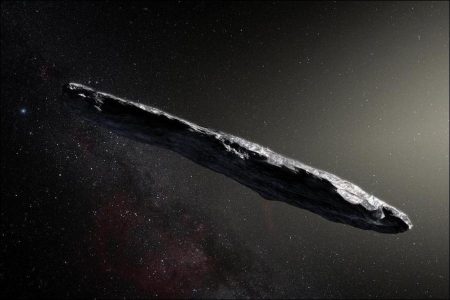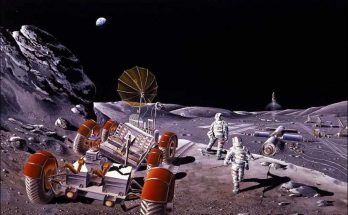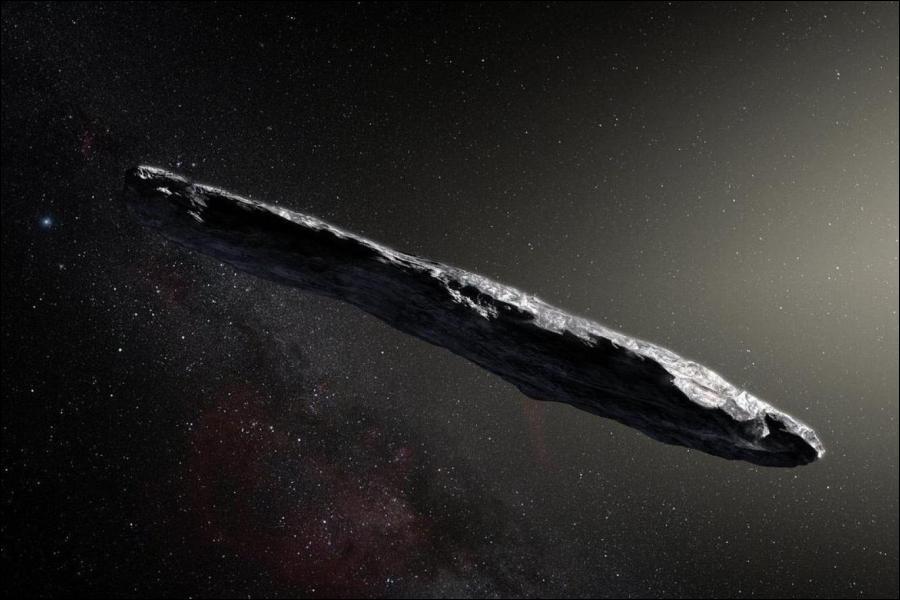Scientists are still confused about the origin of the mysterious meteorite called Oumuamua. Researchers are trying to figure out whether the celestial body is a natural formation or a spaceship that has been disguised as a meteorite to explore our Solar System, as some have suggested.
Experts say they are sure that the object is a rock, not a spaceship, even if they do not have a precise explanation. However, experts acknowledge how the meteorite might have formed and that the strange course of its path in our Solar System is confusing.
Oumuamua was first detected in October 2017, and it did not take long to define it as the first interstellar object to come into the Solar System. For only a few weeks, the researchers hurried to find out more before the image disappeared.
During this time, researchers gathered information about the path of the meteorite in the universe and what kind of matter it contains, while getting enough information to understand that something very strange about this object.
The data was so extraordinary that some suggested that it might be a spaceship sent by aliens to really explore our Solar System.
A new study published in the academic science journal Nature Astronomy suggests that an explanation is more likely to be natural. However, scientists are still not sure exactly what this explanation might be.
Matthew Knight, a research scientist at the University of Maryland’s astronomy department, said:
“In our Solar System, we have never seen anything like Oumuamua. He still remains unknown. (Ancak) However, our preference is to continue to compare it with what we know until we find or find something unique. The alien spaceship hypothesis is a fun idea, but our analysis shows that it can be understood within the framework of natural phenomena.”
The meteorite passed through the Solar System following an unexpected path and mysteriously accelerated as it passed. But there was no clear explanation as to why this happened.
Knight continued:
‘Oumuamua did not move by following a gravitational parabolic orbit as expected from an asteroid. However, as we expected (otherwise), we could not visually detect a comet-like feature. There is neither a tail of dust, nor a gas outlet, any comet hair buz the ice, dust and gas cloud surrounding comets.”
14 astronomers from different parts of the world collaborated to understand the meteorite and its strange movement. This collaboration gave researchers the opportunity to produce the most detailed picture of Oumuamua so far, but they could not give an exact answer to the question of where it came from.
Knight explained the research:
We have brought together a strong team of experts from various fields ‘Oumuamua. This meeting allowed us to make the first comprehensive analysis and see a big picture of what we know about the object. (…) Here we tend to assume that the physical processes we observe near our home are universal. But we have never seen anything like um Oumuamua de in our Solar System before. This thing is strange and difficult to explain that you must accept. However, this does not mean that it cannot be explained by another natural phenomenon.
Instead of thinking that red and cigar-shaped rock was a spaceship, the team put forward a series of alternative natural processes.
In one of these alternatives, the team evaluated the possibility that the celestial body could have sprung from a giant gas planet orbiting another star. Previous arguments suggested that the Oort cloud was formed exactly this way in a gigantic cluster of small objects outside the SistemSolar System ve, and that some of the objects within them traveled through the universe on their own.
He continues to look up at the sky to find out if there are other visitors like Oumuamua. The Large Synoptic Survey Telescope (LSST), which will be operational in 2022, will enable them to see more similar celestial objects, if any.
Knight concluded:
In the next 10 years ‘We hope to see more celestial objects like Oumuamua. LSTT will be far beyond all other observation telescopes, we will have the opportunity to find small interstellar visitors. We can start seeing a new object every year. Then we will begin to understand whether um Oumuamua is strange or normal. If we find 10-20 of these things and say, um If the Oumuamua still maintains its extraordinary, then we will have to review our statements.
Views: 123





